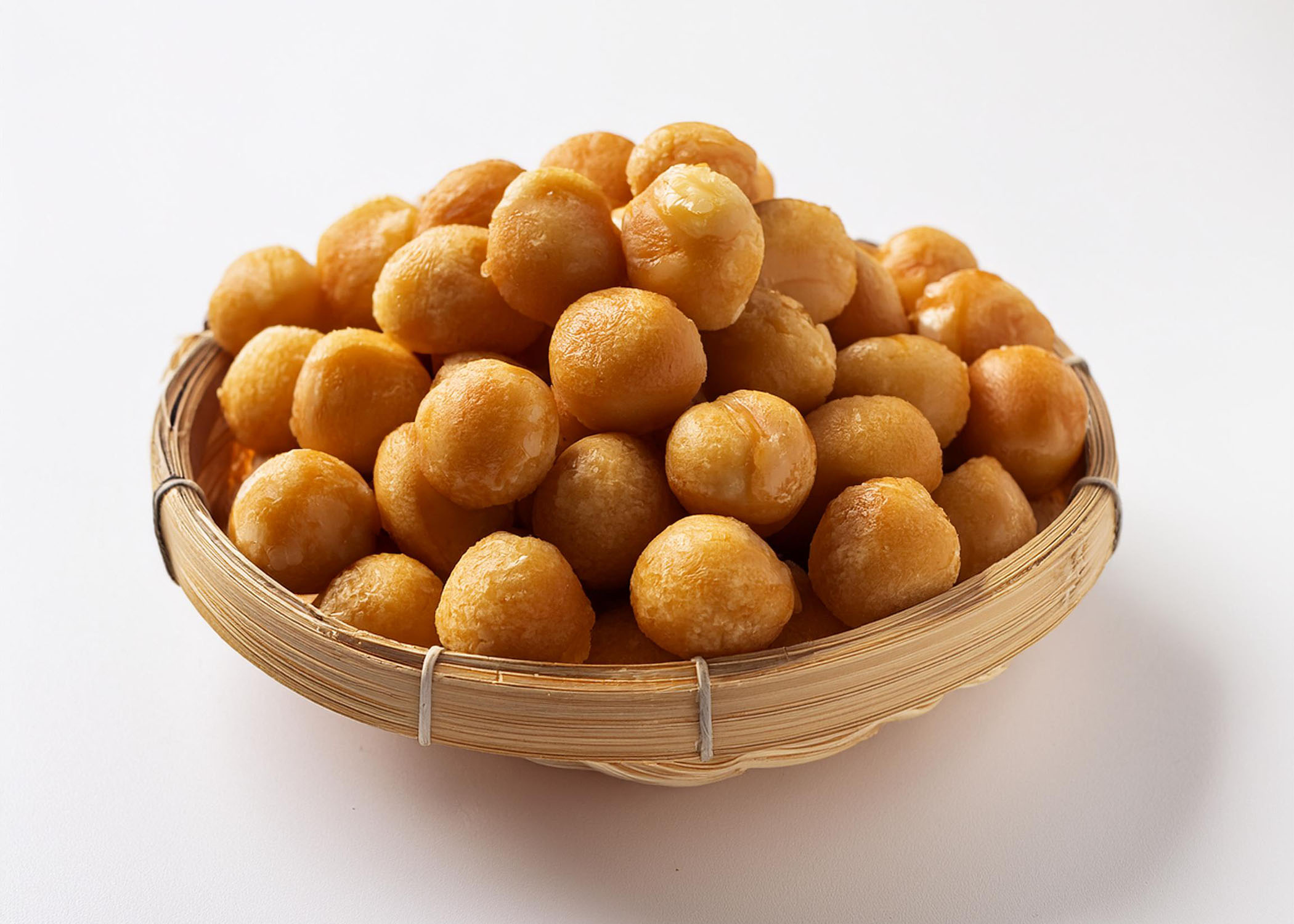Botanical Name: Aleurites moluccanus
Also Called: Kemiri
Candlenut is a versatile nut celebrated for its rich, buttery flavor and indispensable role in Southeast Asian and Polynesian cuisines. Visually, it’s encased in a hard, stone-like shell, which, when cracked open, reveals a creamy, white kernel. This kernel is slightly larger than a macadamia nut and shares a similar texture. However, its true magic lies in its transformation during cooking. When raw, candlenuts are mildly toxic, owing to their high levels of saponin and phorbol, and must be cooked to neutralize these compounds.
In the kitchen, candlenuts are prized for their ability to thicken and add depth to dishes. They are a cornerstone ingredient in many spice pastes, such as Indonesia’s sambal and bumbu, where they lend a luxurious creaminess and a delicate, nutty flavor. The flavor profile is subtle yet distinctive, reminiscent of macadamia nuts but with a slightly bitter undertone when raw. When roasted or fried, they develop a richer, more aromatic quality that complements bold spices like turmeric, galangal, and chili.
Candlenuts stand out in iconic dishes like Malaysia’s rendang, where they provide body and richness to the coconut-based gravy, and Indonesia’s opor ayam, a fragrant chicken curry. They are also a staple in Polynesian cuisine, often ground into a paste and mixed with herbs to create marinades or dipping sauces.

